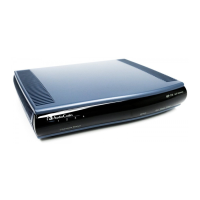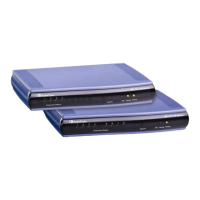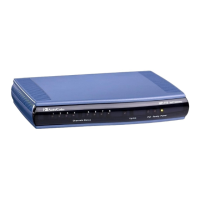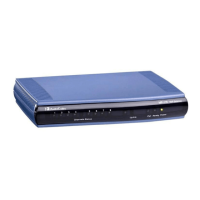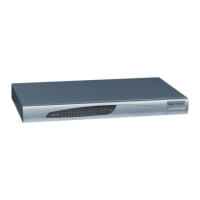Version 5.8 331 October 2009
SIP User's Manual 6. Configuration Parameters Reference
Parameter Description
Web: Comfort Noise Generation
Negotiation
EMS: Comfort Noise Generation
[ComfortNoiseNegotiation]
Enables negotiation and usage of Comfort Noise (CN).
[0] Disable = Disable (default).
[1] Enable = Enable.
The use of CN is indicated by including a payload type for
CN on the media description line of the SDP. The device can
use CN with a codec whose RTP time stamp clock rate is
8,000 Hz (G.711/G.726). The static payload type 13 is used.
The use of CN is negotiated between sides. Therefore, if the
remote side doesn't support CN, it is not used.
Note: Silence Suppression must be enabled to generate CN.
Web/EMS: Default Release Cause
[DefaultReleaseCause]
Defines the default Release Cause (sent to IP) for IP-to-Tel
calls when the device initiates a call release and an explicit
matching cause for this release is not found.
The default release cause is
NO_ROUTE_TO_DESTINATION (3).
Other common values include NO_CIRCUIT_AVAILABLE
(34), DESTINATION_OUT_OF_ORDER (27), etc.
Notes:
The default release cause is described in the Q.931
notation and is translated to corresponding SIP 40x or
50x values (e.g., 3 to SIP 404, and 34 to SIP 503).
For an explanation on mapping PSTN release causes to
SIP responses, refer to Mapping PSTN Release Cause to
SIP Response on page 509.
Web: Enable Microsoft Extension
[EnableMicrosofExt]
Modifies the called number for numbers received with
Microsoft's proprietary "ext=xxx" parameter in the SIP
INVITE URI user part. Microsoft Office Communications
Server sometimes uses this proprietary parameter to
indicate the extension number of the called party.
[0] = Disabled (default).
[1] = Enabled.
For example, if a calling party makes a call to telephone
number 622125519100 Ext. 104, the device receives the SIP
INVITE (from Microsoft's application) with the URI user part
as INVITE sip:622125519100;ext=104@10.1.1.10 (or
INVITE tel:622125519100;ext=104). If the parameter
EnableMicrosofExt is enabled, the device modifies the called
number by adding an "e" as the prefix, removing the "ext="
parameter, and adding the extension number as the suffix
(e.g., e622125519100104). Once modified, the device can
then manipulate the number further, using the Number
Manipulation tables (refer to ''Number Manipulation and
Routing Parameters'' on page 408) to le
ave only the last 3
digits (for example) for sending to a PBX.
EMS: Use SIP URI For Diversion
Header
[UseSIPURIForDiversionHeader]
Sets the URI format in the SIP Diversion header.
[0] = 'tel:' (default)
[1] = 'sip:'
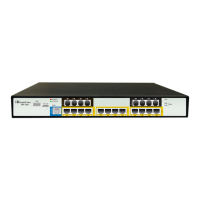
